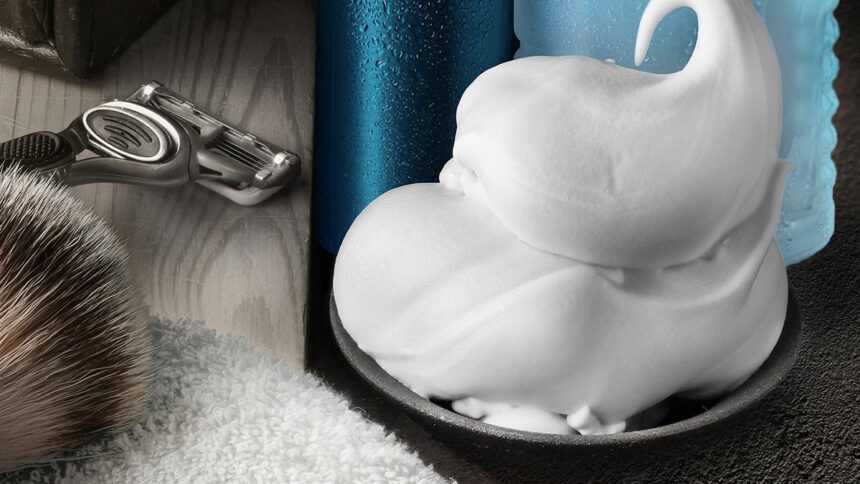Pubic Hair Removal: A Historical and Modern Perspective
Pubic hair removal and grooming have ancient roots, tracing back to hygiene and aesthetics in ancient civilizations like Egypt, Greece, and Rome. However, by the Middle Ages, it was linked to soliciting for sex work, leading women to use pubic wigs to hide syphilis. Fast forward to the 20th century, beauty standards and marketing played a significant role in shaping perceptions. Companies like Gillette framed body hair as "unsightly," and by the 1990s, razor and waxing brands began promoting the myth that pubic hair is unhygienic.
But is pubic hair really unhygienic? According to Tanaya Narendra, a sex health expert at Abhilasha Hospital and IVF care in Allahabad, pubic hair serves a crucial role in maintaining hygiene and health, especially in hot climates like India. She explains that pubic hair increases the surface area of the genitals, making it easier to regulate temperature and reduce chafing during the summer.
However, excessive grooming can have serious health implications. In women, shaving and waxing can weaken the skin’s barrier and immune defenses, leading to chronic inflammation and increasing vulnerability to conditions like lichen sclerosus and vulvar melanosis. These grooming methods also disrupt the skin’s pH and lipid balance, reducing levels of protective bacteria like Lactobacillus in the microbiome. As a result, the area becomes more susceptible to infections such as candidiasis, bacterial vaginosis, and urinary tract infections (UTIs).
A study by Andrzej Galbarczyk at Jagiellonian University in Poland found that extreme grooming was linked to a higher risk of recurrent UTIs—three or more per year—suggesting that frequent hair removal may disrupt the pubic area’s protective microbial ecosystem. Frequent grooming also leads to microtears, increasing the risk of sexually transmitted infections (STIs) through bloodstream exposure. A meta-analysis published in BMC Women’s Health found that the odds of having gram-negative gonorrhoeal and chlamydial infections in pubic hair groomers were statistically significant.
Despite the hygiene myth, grooming can cause irritation, compromise protection, and lead to common issues like genital itching. Excessive grooming can also cause vestibulodynia, a hypersensitive skin condition of the vulva. Shaving and waxing often lead to irritation, ingrown hairs, and folliculitis, which can escalate into staph infections or abscesses. A blocked Bartholin gland from poor hygiene or hair removal may cause abscesses and, in some cases, lead to pelvic inflammatory disease (PID).
For transwomen with neovaginas, the skin is especially delicate and more prone to dryness, irritation, and heightened sensitivity. Pubic hair removal in this sensitive area can lead to microtears, inflammation, and infections, which may complicate essential practices like daily vaginal dilation by causing pain and worsening skin conditions. Gentle grooming methods and proper aftercare are crucial to reduce these risks and maintain vulvar health.
Men have increasingly embraced pubic hair removal as well, but the anatomical differences between male and female bodies influence how grooming affects health outcomes. In males, the urethral opening and the anus are approximately 18 to 20 cm apart, significantly reducing the likelihood of cross-contamination by bacteria and lowering the risk of UTIs and STIs. In contrast, females have a much shorter distance—around 4 cm—between the vaginal opening and anus, making them more vulnerable to bacterial migration and infections.
However, this doesn’t mean grooming is without risk for men. According to Dr. Narendra, men who frequently remove pubic hair often experience boils, microtears, and skin irritation, particularly on the scrotal skin, which is thin, highly vascularised, and prone to trauma. These minor injuries can become entry points for pathogens, potentially leading to folliculitis, abscesses, or even secondary infections.
The case of men highlights the importance of understanding the anatomical differences between genders when it comes to grooming. In India, it is still taboo to talk about genital health, leading to numerous patients opting for do-it-yourself remedies or turning to wellness gurus. Many patients come with chemical burns on their vulva because they used a hair removal product that was not the right pH or was not designated for intimate areas.
The emotional toll of body image issues can be just as significant. Women often feel insecure about their vulvas, with comments like "My lips are too big," "too bumpy," "too dark," "too uneven," or "My boyfriend/girlfriend tells me my labia are not pretty." Dr. Ross emphasizes the need for self-awareness and empowering patients to understand their anatomy, preventing sexual dysfunction and building a healthier connection with their bodies. She also stresses the importance of discussing pubic hair removal practices and sexual history during consultations to ensure comprehensive care.
The importance of educating ourselves, especially in light of the rise in social media-promoted products targeting young women and trans individuals, has never been more crucial. Whether you were born with a vagina or had one created, it is important to clean the vulva, but you don’t have to do too much internal cleaning. Dr. Ross highlights that the vagina naturally maintains its pH balance, and disrupting this can lead to infections. The digital world is rife with inaccurate medical advice, and taking charge of our health is key. Educating those with a vulva and vagina is the first step to dispelling dangerous genital hygiene recommendations.
It’s time to shift the way women view their bodies, particularly vulvas and vaginas. The shame and anxiety surrounding sensitive topics must go. Women need to become better health advocates, not only for their genitals but also for overall wellness. People must seek a reliable healthcare provider to partner with on their health journey.
Reference : https://www.thehindu.com/sci-tech/health/understanding-pubic-hair-to-figure-out-what-comprises-genital-health/article69490183.ece








